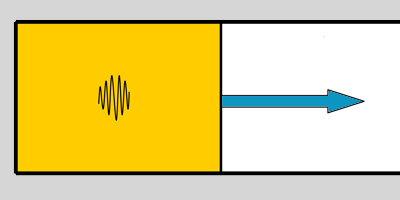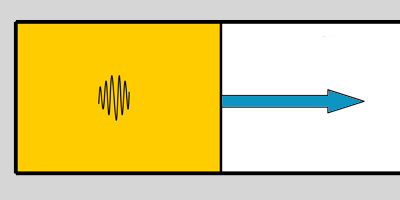Quantum Pistons
In equilibrium, the change in free energy, F, of a system as it transitions between two states sets a limit on the work, , that can be realized in the process. Theorists have searched for similar exact relations between the work done on or by a system and its change in free energy in nonequilibrium processes, and some of these relations have been verified in experiments on small, effectively classical systems, such as macromolecules.
Showing the relations are also valid in nonequilibrium quantum systems is of fundamental importance. A case in point is the “Jarzynski equality” derived by Christopher Jarzynski at the University of Maryland, College Park, which states that, classically, the statistical average of exp[ ] is equivalent to exp[ ]. Whether the equality applies to a quantum piston—a quantum particle in a one-dimensional box, with one of the walls moving at a fixed velocity—has remained an open question.
Writing in Physical Review E, Jarzynski and Haitao Quan, also at the University of Maryland, utilize a solution to the time-dependent Schrödinger equation for this quantum machine that shows the Jarzynski equality is in fact satisfied. Their result is not intuitively obvious, as there are important differences between the classical and quantum pistons; for example, the work performed on a classical particle is always negative in an expanding piston, but quantum fluctuations lead to the possibility of positive work in the quantum case. – Ronald Dickman





